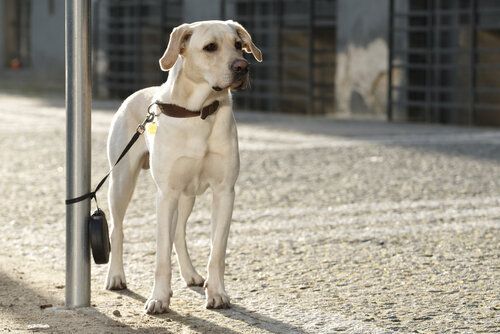Roughly 10,000 pets go missing in the greater Toronto area each year. And they are only the ones that are reported. And only an approximate 65 per cent make it home. The following tips will help you put safety and prevention front and centre, when bringing home your new pet.
Story continues after the slideshow...
- Never leave pets tied up in public places, even for a minute. They get stolen, or get loose and run. Under Ontario law, tying your pet up and leaving he or she tied somewhere can actually be considered abandonment!
- Be prudent and use extra caution to secure pets when storms are coming and on "firecracker" nights.
- Don't leave small dogs unattended in yards, they are prey to large birds and coyotes.
- Have a recent picture on hand, including size relationship (beside a person or object). It's also been suggested to take a photo of yourself with your pet and having it on hand so you can prove that your pet (property, in Canadian federal speak) is really yours.
- Always have visible identification on your pet in form of name-tag with your direct phone numbers and city license tag. Make sure to always update the name tag with current phone numbers and to update your city license tag too if you move.
- Microchip your pet (unless a rescue group has already done so) -- and make sure the issuing company has updated information every year -- this is very important!
- Make sure your pet's collar and/or harness is snug and cannot slip over its head. And test it.
- Check carefully for holes under fences, that fences are in good repair, and there is nothing against the fence that a dog can jump onto, and then over the fence.
- With new rescues/adoptions, take them out into yard on leash for the first couple of weeks to ensure they are comfortable. Gradually increase their knowledge of their new neighbourhoods, but keep them on leash until you are absolutely certain they are well-socialized, under "voice control" and are have reliable recall. When walking your (new) dog, have a good grip on the leash (your hand through the loop and holding on to a second portion of leash with second hand), in case dog bolts or spooks. Note, this rescuer prefers to double leash with newbies... Always safety first!
- Because some rescues/new adoptees try to bolt out the door when first brought home, keep the leash attached to them for up to a week. That way if they do get out, there is a leash for someone to grab if they can get close enough. And just as important is if they do get away, a dog at large with a leash attached is going to be noticed so reports of the dog will come in much sooner. Be very careful, however, not to leave a leash attached when you are not home as it's a choking/safety hazard.
- Use management measures to ensure your pet doesn't bolt through door (baby gates, tethers, crates, leashes). Teach "sit stays" at the door, to habituate your pet to not react negatively or impulsively to an open door.
- Periodically, you will need to be away from your pet. Plan in advance how this will play out. Acclimatize them to a local doggie daycare, kennel, or, to your mother in law's place. Wherever you are going to place them temporarily, make sure it is not an "unknown" and therefore a secure environment to them. Make sure to personally visit and check out any doggie daycare or kennel option and check references, care and facilities. This is extremely important for the proper care and safety of your pet as there are no rules / regulatory regimes for kennels in Canada.
- If your pet goes missing, contact your city officials and the originating rescue organization immediately. The rescue community can be a very powerful advocate helping you locate & re-secure your pet. Take advantage of the Helping Lost Pets Canadian website as well: www.helpinglostpets.com.
- Finally, if you have ever lost and hopefully recovered your pet, take the opportunity to give back when someone else loses their pet locally. Get out there and help them, the way others once helped you.
Safety first. Responsible pet owners are your cat or dog's best defence.
The C4P Amber Alert for Lost Pets is designed to work with and educate families on preventative measures, as well as provide recommendations on obtaining market reach to locate a lost pet. To download, click on:
